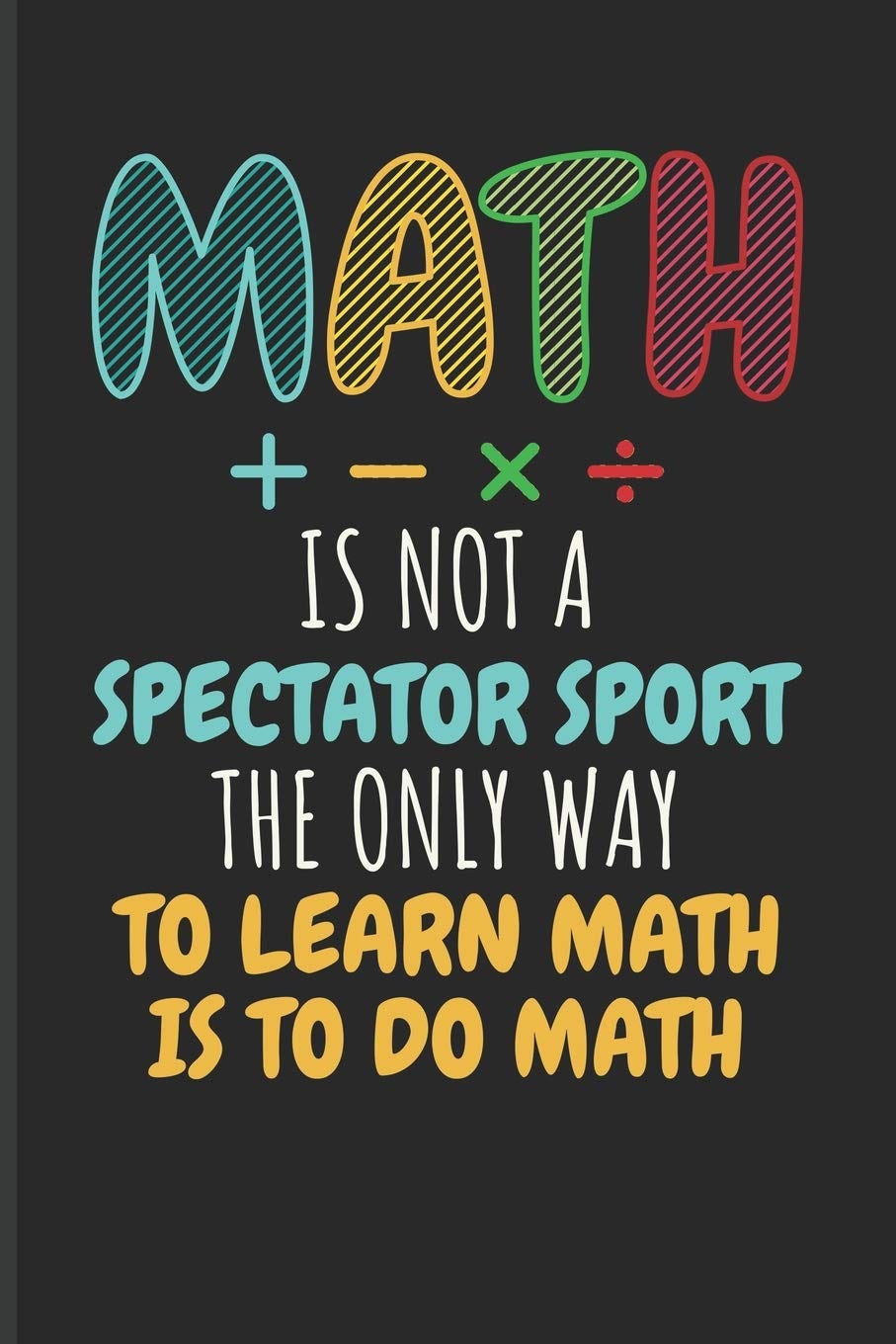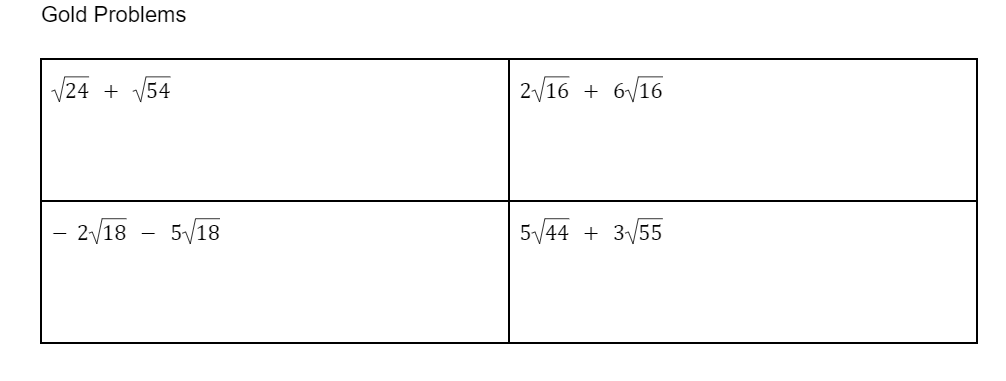Planning Practice Problems: Balancing Cognitive Load for Students
When planning a typical lesson plan, a majority of the focus goes into creating a crystal clear model of the material. We focus on how to get students to remember definitions, key conceptual understanding, and linking together prior knowledge. For me, I focus a ton on the model of my lessons making sure that I know the key questions I am asking students and how I word each definition. Furthermore, presenting the steps to solve problems in a memorable and entertaining manner, I believe, helps students gain long term memory of the material.
However, a lesson without practice is merely a lecture. When presenting content, we need to give students an opportunity to solve problems for themselves. As the age old saying that all math instructors love to reference:
So do we must; but what makes a high quality practice opportunity for students? The focus of this article is exploring what makes good practice for students in math and how we can plan our practice in a manner that is positive for student outcomes (without adding in extra work for us).
Fluency vs. Rigor
Before we dive into breaking down how to plan practice problems, an important point to note is fluency versus rigor in mathematics.
Fluency in mathematics is defined as the skills students need to master in order to focus on higher level conceptual skills. For instance, for students to focus on higher level skills such as solving systems of equations and describing functions, students need a moderate mastery of basic skills such as inverse operations, order of operations, and performing basic arithmetic.
Rigor in mathematics would be defined as the higher order understanding that we hope students can achieve through solving a variety of problems. For instance, when students simplify radicals we hope that they are able to simplify a variety of radical problems with fractions, negative exponents, and exponents.
When planning practice, it is important to balance these two components to support student learning. We do not want the practice to be too difficult for students to access the material by giving them rigorous work for their first few problems. We also do not want to give them a plethora of basic application problems because students will become bored and unengaged with the content. Like a balance (a math teachers favorite analogy) we have to keep our problems with a good mix of fluency and rigor.
Cognitive Load Theory: Planning our Practice with Care
For my psychology lovers, there is research around how these ideas intertwine. Cognitive Load Theory (CLT) is the premise that our brains can only think about and handle so many things before we begin to suffer in performance. Therefore, when we plan our practice problems we should make sure to plan them with care for fluency and rigor. If students are introduced to too much rigor right off the bat, then they will become overwhelmed and begin to give up. Thus, we want to give students small victories as they engage in the content by beginning with fluency problems. Then we can build more rigor as students progress and build their knowledge and cognitive load of the material.
A point I would like to note before I get into the application of the ideas are that students cannot increase their overall cognitive load capacity, similar to how individuals cannot increase their overall working memory capacity (the amount of individual things we can think about at once). However, the accumulation of knowledge and chunking of information can allow us to handle more chunks of information at once, allowing us to engage in more complex problems.
How to Plan Practice for Positive Student Outcomes: Sectioning by Difficulty
By sectioning by difficulty, we create three different tiers of difficulty to put problems within. For instance you could have the sections easy, medium, and hard and put problems within these tiers. If you would like more positive framing, I like to name them bronze, silver, and gold. In these tiers, pick problems that match each section.
The easy section should contain very basic fluency problems. In this problem set students are practicing the basics of applying the skill. You could even practice a specific step in the skill here to help with overcoming misconceptions or difficult parts of problem solving.
The medium section contains the primary problems that you want students to solve. These should match in rigor of exit ticket questions, with the hope that if students can solve these problems they will be able to achieve mastery of the skill.
The hard section are for our more gifted learners who fly through content; don’t mistake hard problems for medium problems though. Hard problems should really push the limits of the rules and steps students have to take to solve the problems.
If you are really ahead on your planning, you can include a bonus section that includes reviewing old topics of learning. I highly recommend if you do this then you provide students with a quick review on the content within the notes or the worksheet. If you use a website like DeltaMath, this is easier as it will provide students with an example on how to solve the problem.
Let me show you an example. Suppose we just taught a lesson on how to simplify radicals. When we introduce practice, we want to ensure that students are able to gain fluency in completing the skill as well as get practice with more difficult/rigorous problems. Here is a way you could plan your practice problems for students.
In the Bronze section, we only include a variety of simple radicals and some easy solutions where students should be able to easily identify perfect squares or break down the numbers with multiplication. In the Silver section, students have to put a bit more effort to break down the numbers with multiplication. Furthermore, we add in an extra layer of numbers on the outside of the radical for students needing to multiply to simplify. Lastly in the gold section, we have problems that students will really need to think about before solving. It is an additional skill that students will have to know to simplify before adding if possible, but our higher learners can pick up this skill more quickly.
Practice is essential to learning mathematics. By planning out our practice to support student fluency, build rigor, and allow students to have small achievements of solving easier problems to build confidence we allow them to succeed in gaining momentum to solving mastery problems. Furthermore, we allow more difficult problems for our higher learners to solve without getting bored. We are NOT providing busy work, but planning practice problems that allow students to get a variety of practice and build the skill that they are learning for the day.
Let me know your thoughts and methods of planning your own practice. I am highly interested in planning of practice problems as I believe them to be the main catalyst of student learning.






